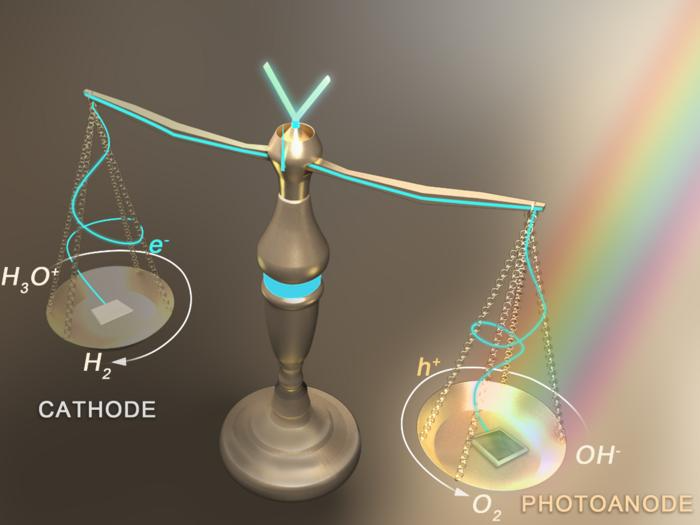Reviewed by Lexie CornerApr 9 2024
The last ten years have seen the complete development of the Photo Electro Chemical (PEC) overall water-splitting reaction (OWS), particularly with regard to new catalysts, characterization techniques, and reaction processes. Compared to the hydrogen evolution reaction (HER), the oxygen evolution reaction (OER) is considered the bottleneck of oxygen water splitting (OWS) because of its sluggish kinetics.
 The bias distribution of the anode and cathode in the PEC overall reaction cell is like two trays of the balance, and the fulcrum corresponds to the short-circuit potential of the PEC cell. Image Credit: Science China Press
The bias distribution of the anode and cathode in the PEC overall reaction cell is like two trays of the balance, and the fulcrum corresponds to the short-circuit potential of the PEC cell. Image Credit: Science China Press
A number of OER alternative half-processes, including urea, ammonia, and alcohol oxidation reactions, have been devised to lessen the bias consumption of photoanodes. The ultimate aim of photochemistry is the creation of an effective, two-electrode, impartial PEC cell.
Unfortunately, earlier research mostly disregarded the polarization on the counter electrode in favor of concentrating solely on the characteristics of the working electrode in the three-electrode cell. Anodic oxidation and cathodic reduction half-reactions work in concert, and this mechanism is still unclear.
Recently, a method for measuring the bias distribution in a two-electrode PEC cell was proposed by Professor Yuchao Zhang's group. This method involves carefully examining the bias distribution between sample photoanodes and Pt cathodes in PEC OWS cells.
They demonstrated for the first time that the photovoltaic and cathodic Fermi levels determine the electrode bias consumption and that the OER half-reaction is not always the rate-limiting element of the OWS.
Additional investigations using Ni/n-Si as the model photoanode revealed that the bias distribution in the overall reaction can be effectively regulated by adjusting the electrolyte pH and coupled half-reactions.
In light of this, they suggested a description to assess the compatibility of different half-reactions, pointing out a general procedure for creating an effective PEC overall reaction cell. Motivated by this, they created an impartial PEC cell with a photocurrent of 5.3 ± 0.2 mA cm−2 comprised solely of a Ni/n-Si photoanode and a Pt cathode.
Journal Reference:
Dang, K., et al. (2024) Bias distribution and regulation in photoelectrochemical overall water-splitting cells. National Science Review. doi.org/10.1093/nsr/nwae053